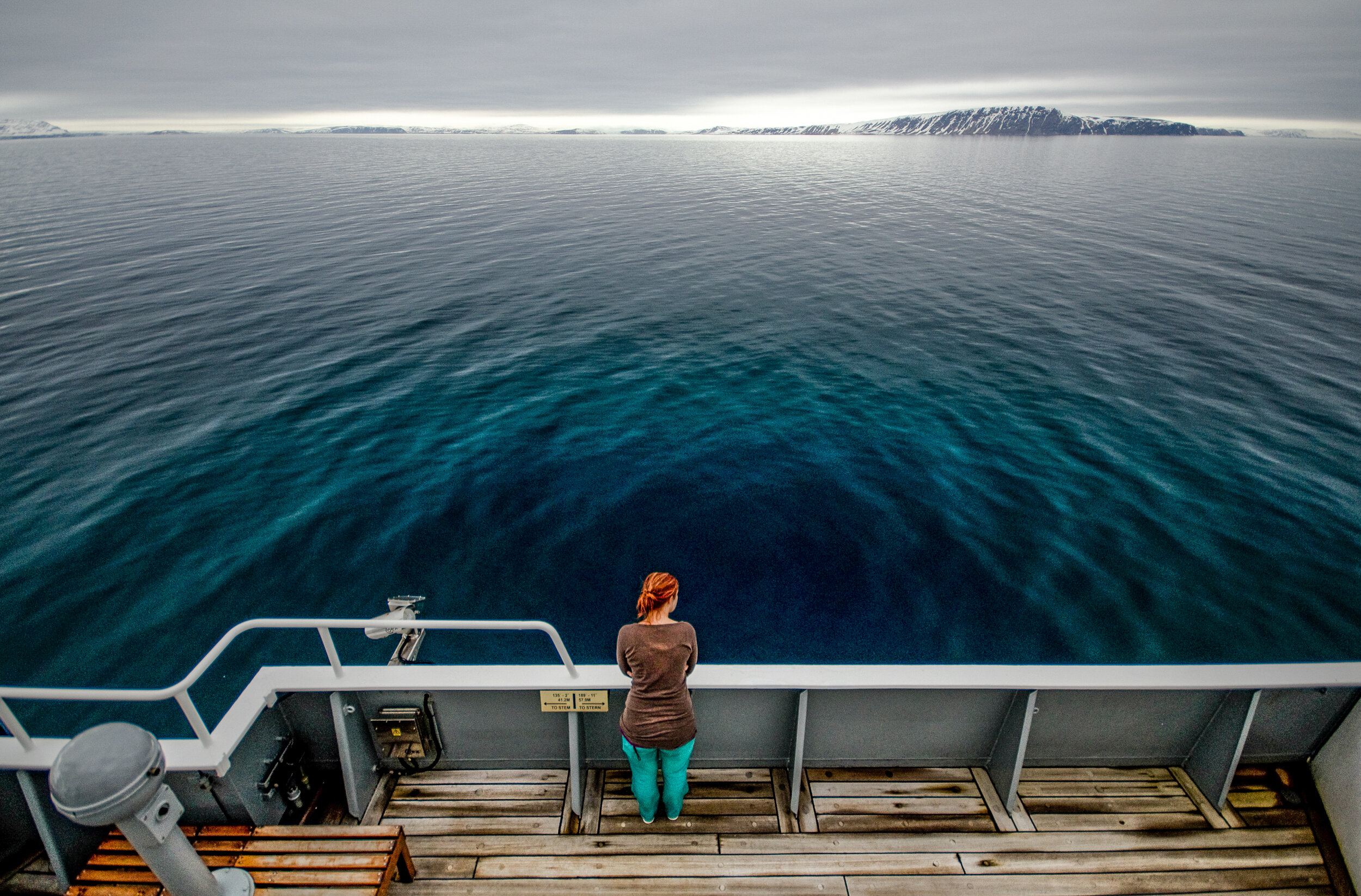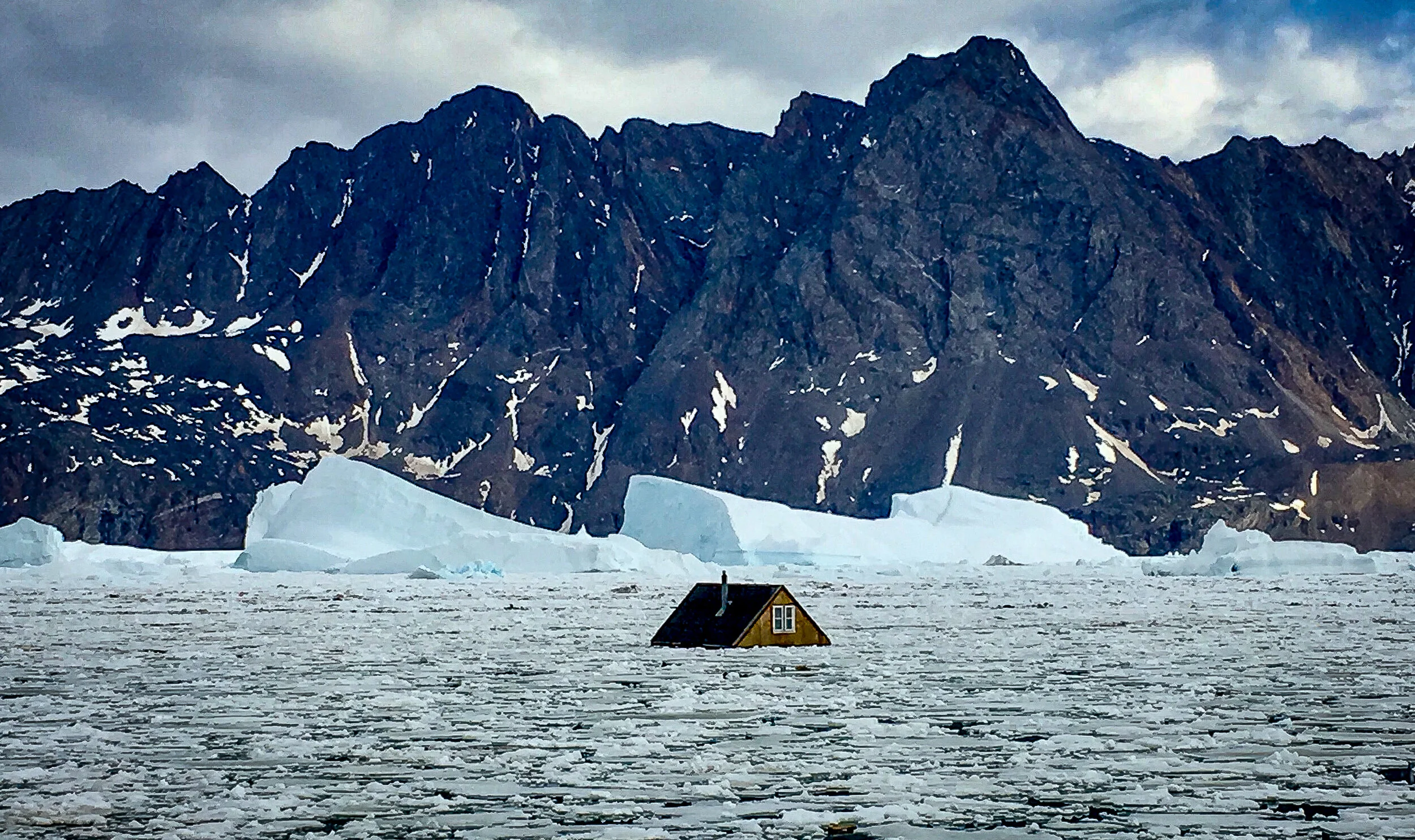The More The Arctic Melts - The More It Rains In Scotland!
SCIENCE / CLIMATE CHANGE
Writer: Hannah Grit / SAMS, Scottish Association for Marine Science
Photographs: Will Harvey, Callum Whyte, Euan Paterson
July 2021
In Scotland, the rain feels like a constant and never-ending companion, but even this cliché is not immune to the impact of a changing climate.
Recent work in the Blue-Action Project, a European research project investigating the effects of a changing Arctic on weather and climate has tracked the links between some of the more extreme weather events across northern Europe to the accelerating warming of the Arctic region.
And, as writer Hanna Grist from SAMS, The Scottish Association for Marine Science puts it, using a very Scottish word for wet and dreary: the future is looking pretty dreich.
A warming Arctic & cold anomalies
A frequently cited fact is that parts of Scotland are closer to the Arctic than to London, the capital of the United Kingdom. Historically, culturally and geographically, Scotland has close links with our Arctic neighbours, yet our climate is traditionally mild and damp rather than cold, given the mediating influence of the nearby Gulf Stream.
The rapid and amplified global warming effects felt by communities living within the Arctic Circle are not so easily recognisable in Inverness or Edinburgh. Yet scientists studying the interconnection of the atmospheric and ocean processes mediating weather and climate have shown that changes in Scotland’s weather can be linked back to environmental shifts seen in the Arctic.
It comes as no surprise that the Arctic is warming- media accounts of diminishing glaciers, retreating ice fronts and record temperatures abound. In fact, Arctic sea ice is estimated to have declined by around 13% per decade since 1979. Perhaps less reported is not the fact that the ice is going, but where it is going. Ice doesn’t just disappear- it melts, particularly during the summer months. These massive ice losses lead to a huge influx of fresh, cold water into the surrounding sea, ending up in the North Atlantic where it joins the large, churning circulatory system of the ocean.
This rush of cold, fresh water to the subpolar North Atlantic has wide implications. Over the past few winters, this area of ocean has been found to be cooling rapidly, and to an extreme degree. The cooling in this region often stands in marked contrast to the warming observed over the rest of the Earth's surface, so it has been called the “cold anomaly”.
In science, anomaly is just another word for an interesting result. Several teams across the USA and Europe have been investigating the causes and consequences of this cooling, trying to unravel the questions around the phenomenon. Studying large-scale ocean processes is tough, and international collaborations such as AtlantOS have played a role in creating and sharing sufficient data to study the impacts.
“Perhaps less reported is not the fact that the ice is going, but where it is going. Ice doesn’t just disappear- it melts, particularly during the summer months. These massive ice losses lead to a huge influx of fresh, cold water into the surrounding sea, ending up in the North Atlantic where it joins the large, churning circulatory system of the ocean.”
Satellite images can highlight temperature variation in the surface areas of the ocean, but cannot easily distinguish freshwater from saltwater, or show anything below the superficial layers. For that, direct observations of the ocean are needed from specialist marine research institutes like the Scottish Association for Marine Science, ranging from sending out ocean cruising research boats to deploying underwater robot gliders.
Some of the most useful measurements stem from huge ocean-spanning static strings of instruments known as moorings, and from numerous “Argo floats”, which drift through the ocean with the currents and record the temperature, salinity, and other ocean properties. These amazing technological instruments have allowed scientists to begin to unravel the knock-on effects of this cold patch in the ocean.
SAMS technicians Estelle Dumont, right, and Karen Wilson recover an autonomous robotic glider from the Atlantic Ocean, near to the Isle of Tiree, Scotland. JONAA©Euan Paterson, SAMS
From one extreme to another
The ocean is a constantly churning mixing bowl. In the North Atlantic, the water at the surface is warm and fresh. In autumn and winter, the surface water cools and sinks, creating a mixing effect. The problem comes when the melting Arctic sea ice is thrown into the bowl- the freshwater is less dense, sits on top, and inhibits the normal mixing process.
The freshwater increases interaction between the atmosphere and the surface layer. A shallow layer of water cools down in contact with the frigid winter air much faster than a deeper mixed layer. It means that the more freshwater released into the ocean, by Arctic ice, the cooler the water at the surface becomes across much of the subpolar North Atlantic. Not good news for those looking to swim in the Atlantic.
But even worse news for those travelling across the surface: these colder sea surface temperatures are a key source for the development of storms. A study from the Horizon 2020 project Blue-Action and led by the National Oceanography Centre showed that the air masses travelling over the sea surface are influenced by the temperatures below, often gaining speed or becoming more unstable in response to the ocean. In climate science, we use a metric called the "Eady growth rate", which is a measure of the instability or "explosiveness" in the atmosphere.
So freshwater released from the Arctic causes cooler sea surface water in the North Atlantic, which causes the atmosphere interacting with the ocean to become more explosive. In fact, it results in a high number of individual small cyclones travelling across the subpolar Atlantic, which together have a dramatic impact on the overall storminess at sea and beyond. These storms whipped up across the oceans end up on land – and contribute to the unstable and extreme winters that many of us have felt over the past few years.
Effects beyond the ocean
One memorable example is a storm that occurred in December 2015, after the largest freshwater release event from the Arctic over the last 40 years. The storm resulted in cold, southward flowing air masses along the west coast of the subpolar region and warm, moist, rising air masses on the eastern side. In other words, there were extreme cold air outbreaks over Canada and severe flooding events over the UK. This resulted in some of the highest rainfall recorded in the UK, 341mm falling in 24 hours, and over 16,000 homes and businesses engulfed by rising waters.
So, from the melting Arctic to a wetter Scotland. Perhaps not the strengthening of links between Scotland and Arctic nations we would hope for, but through large-scale, collaborative science, we can at least begin to understand the complex chain reactions in the ice-ocean-atmosphere system. With warming in the Arctic predicted to accelerate, it looks like we can expect even more stormy winters ahead. ▢
A cottage awaits the oncoming rain in Taynuilt, Argyll, Scotland. JONAA©Will Harvey, SAMS
About the project:
Blue-Action is a major European research project investigating the effect of a changing Arctic on weather and climate. The project has received funding from the European Union's Horizon 2020 research and innovation programme under grant agreement no. 727852.
Reference:
Reference: Oltmanns, M., Karstensen, J., Moore, G. W. K., & Josey, S. A. (2020). Rapid cooling and increased storminess triggered by freshwater in the North Atlantic. Geophysical Research Letters, 47(14), e2020GL087207.
Hannah Grist works as the Knowledge Exchange and Communications Manager for the Scottish Association for Marine Science, leading communication and dissemination for the Blue-Action project. She is a science communicator, public engagement specialist, and teacher. Hannah’s interests lie in socio-environmental systems and she lives in Scotland. This article is a part of a science media collaboration between JONAA and SAMS.






















